There is no simple way to tell the story of the recent history of Sainte-Thérèse Island, known as IST (Île-Sainte-Thérèse) by members of the Montreal Waterways research collective, a group based out of the Concordia University Ethnography Lab. Once you start, there is little certainty as to where the story may lead, as its tellings often open different and overlapping pathways for understanding the landscape. Therefore when it came down to the question of how to tell the story of an island—one with a diversity of characters, histories, and happenings—Montreal Waterways made the decision to create a multi-authored compilation of ethnographic texts in the form of a book, entitled An Island is More Than a Park and available online—as part of its research outcomes. The title of the book came from a direct quote made by one of the island’s residents during an interview conducted at a rather difficult time. In the months prior, the community of IST had been preparing to legally defend themselves against a government which had labelled them as squatters, and which was committed to expropriating the seasonal inhabitants to make way for an eco-park. In the time Montreal Waterways spent engaging with the island’s residents and its landscape, it became evident that an island is more than a park: an island is actually a composite of a great number of things that hold meanings that sometimes conflict or contradict each other, especially when so many actors are invested in a version of the island’s story. There was understandably some apprehension on behalf of IST residents, who were suspicious as to why a group of anthropology students were interested in learning about the park, their expropriation, and a project involving collaborative ethnographic research.
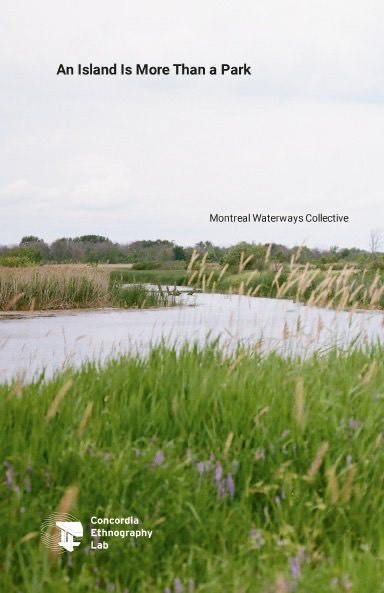
Our team was facing a dilemma. The residents of IST had invited us to visit the island in late May 2022, bringing all eight student members of Montreal Waterways and Director of the Concordia Ethnography Lab Prof. Kregg Hetherington to the island by boat. We were aware of how residents had generously accommodated other researchers from universities and conservation groups in the past, and how some residents later felt they had been taken advantage of when they learned that the research would be used to benefit the eco-park. We were also aware that residents were grieving from the recent outcome of the legal case regarding their eviction, yet they were still entrusting us with their story. The question then became: How do we tell the story of IST and its residents without the risk of causing more harm? And, how do we responsibly care for the trust given to us and ensure that the outcome of this relationship reciprocates that trust?
The summer cottages along the island’s shoreline belong to a group of approximately fifty blue collar Québécois families, some of whom have occupied these cottages for generations. They are rather modest structures, with many measuring no more than ten-by-twelve feet. There are also no utilities, and unless you have a boat, there is no way to access the island. When the first proposal was drafted by the municipality of Varennes in 2012, IST residents were actually elated by the prospect of an eco-park. Many had spent years raising awareness about some of the concerning environmental changes happening on the island, including erosion due to cargo traffic along the Saint-Lawrence Seaway, the proliferation of invasive species, and the impacts of a nearby urban sewage overflow outtake on shoreline biodiversity. For them, the eco-park brought a promise of potential resources that could possibly address these concerns. But in the years following the 2012 proposal, municipal politicians had begun depicting the residents through local media sources as squatters with no legal title to the land they were inhabiting.

Photo by the Montreal Waterways research collective.

Photo by the Montreal Waterways research collective.
In preparation for the legal trial, residents formed a community group in order to pool resources together to hire legal representation that specializes in matters of expropriation. Residents who were part of the community group claimed that some of the properties were granted to them in exchange for labor by priests from a local parish who previously owned the seignorial land. Others even held records of paying municipal property tax which ended when talks of the eco-park began to surface. But in short time it became obvious that the resources and documentation residents had gathered would only go so far against local municipal governments prepared for a lengthy legal battle. In the end, IST residents had no choice but to settle out of court. The settlement left them with nothing but seven years to vacate, and a legal obligation to remove their cottages from the island at their own expense.
In spite of the outcome of the settlement, what our interlocutors from the IST community wanted to make emphatically clear from the outset of our research relationship was that they were not squatters. The objective of the collaborative project between Montreal Waterways and the IST community was not to prove whether residents had property rights or not. Rather, it was an attempt to better understand a community who for decades have been part of, and have deeply cared for, the island. This was something that the residents had hoped would resonate during the trial and convince the government to allow them to stay. It was clear to members of Montreal Waterways that residents were grieving from the outcome of the settlement, so there was a need to be respectful of this process and not exacerbate the situation by probing the residents about how they had arrived at that moment. The project therefore became less focused on the expropriation itself and more about finding a way to demonstrate how residents are still entangled with the island’s history and its landscape. This relationship was largely being made irrelevant by the governments proposing the eco-park project.
The Montreal Waterways research collective was given the opportunity to visit the island to conduct ethnographic fieldwork on two separate occasions. Before embarking on a visit the island, and based on the information that residents provided during the interviews, each student was tasked with selecting a specific research object, defining why it was significant to the research process, and explaining how they would go about observing this object ethnographically. This method was useful not just because it ensured that we weren’t all looking at the same thing, but also because it gave students creative freedom and an opportunity to experiment ethnographically with a piece of the island’s landscape or story. Some of these objects included shoreline erosion, the visuals of the future eco-park, the placards with family photos made by IST residents to protest their eviction, or the remaining ruins of Quebec’s seigneurial system.
The objective here was not for students to create independent projects. Instead, these multiple objects were integral to a form of collaborative research that the Concordia Ethnography Lab has been developing called “composite ethnography”: “a practice of assembling research from unlike and sometimes ill-fitting ingredients” and used to “describe both the method and the form that intentionally retain traces of the heterogeneous material elements that went into composing them in the first place” (Hetherington, unpublished manuscript).

Photo by the Montreal Waterways research collective.
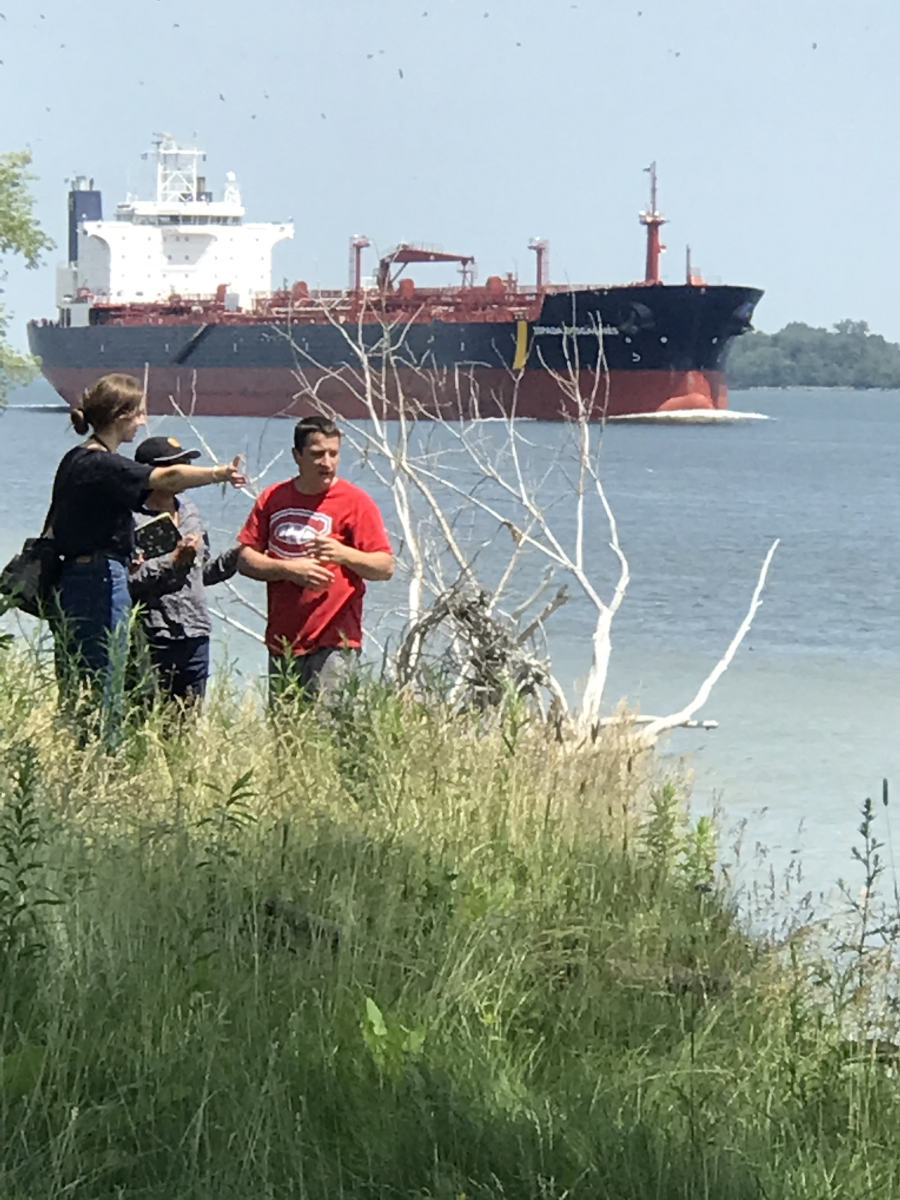
Photo by the Montreal Waterways research collective.

Photo by the Montreal Waterways research collective.
Our small book of ethnographic texts, An Island is More Than a Park, was the outcome of this composite approach to ethnographic research. In the case of IST, this approach allowed for a few things. First, it gave graduate students an opportunity to not only gain experience and further develop their capacities in both creative and collaborative ethnographic practice, but to also set realistic goals about what can be accomplished within a set timeframe. It is not that Montreal Waterways puts hard deadlines as to when projects should end; rather, we are cognizant that collaborative research involves multiple actors, each with their own expectations, schedules, and pathways. Second—and this is where the ethics comes in—this object-orientated approach provided diverse entry points for interrogating the expropriation and the future eco-park without overburdening residents with having to explain first-hand how they are impacted by it. Instead, it offered a way for residents to speak to and speak through these objects during our fieldwork about the life and loss of IST. Lastly, it demonstrated how ethnographic research and writing involves a process of filtering what information remains or what is removed in order to tell a cohesive story. However, since its completion the book has somewhat taken on a life of its own as an object of conversation or of writing—as in the case of this blog post—continuously building on its story. The value of this research lies not in the physical book itself, but in the pieces, the process, and the people that helped bring it together and who want to continue sharing its stories.
The Return to Sainte-Thérèse Island (IST)
With the book finally completed, Montreal Waterways organized an event in February 2024 as a way to mark the occasion, and more importantly, to express our gratitude to the residents of IST for their contribution by giving them a copy. Since English is not residents’ first language, it was a priority from the beginning to also create a French version of the book so that its contents could be fully understood. The event was held at the Serge Bouchard library in the municipality of Pointe-aux-Trembles which rests near the shoreline with a view of IST on the opposite side of the river. Our principal interlocutors arrived, along with many IST residents who we had yet to meet, and who were evidently eager to participate in the discussion.
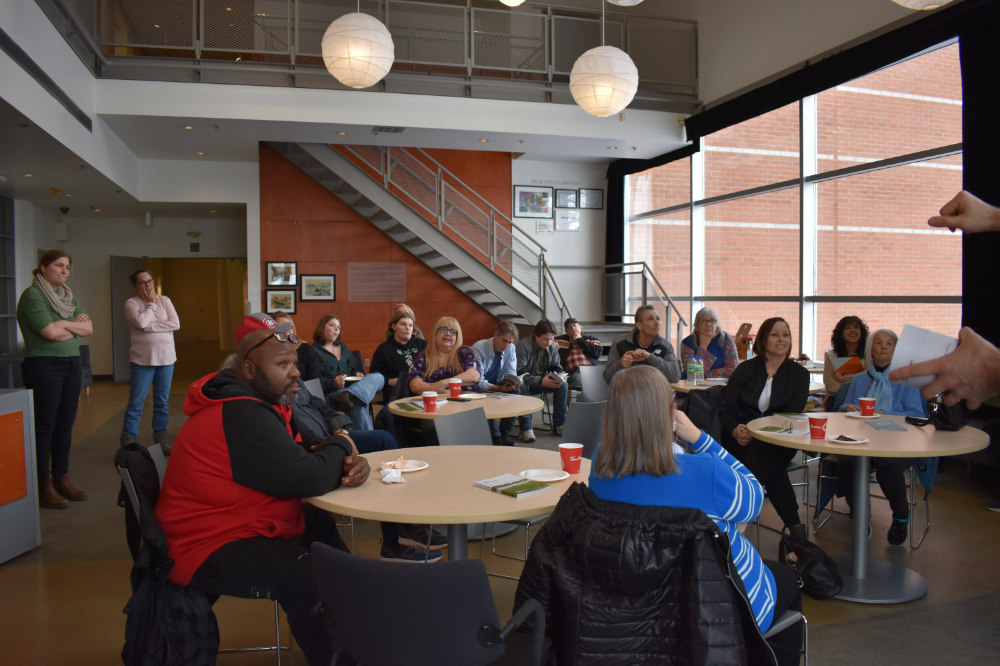
Photo by the Montreal Waterways research collective.
The presentation began with a brief overview about Montreal Waterways, as well as the purpose for conducting ethnographic research and for creating the book of ethnographic texts that residents had in hand. But it wasn’t until we started reading excerpts from a few of the chapters that we fully grasped the weight of the books content. As a team we’ve read and reread the book numerous times, but being in that room with the IST community who were listening intently and evidently moved, the words took on new meaning.
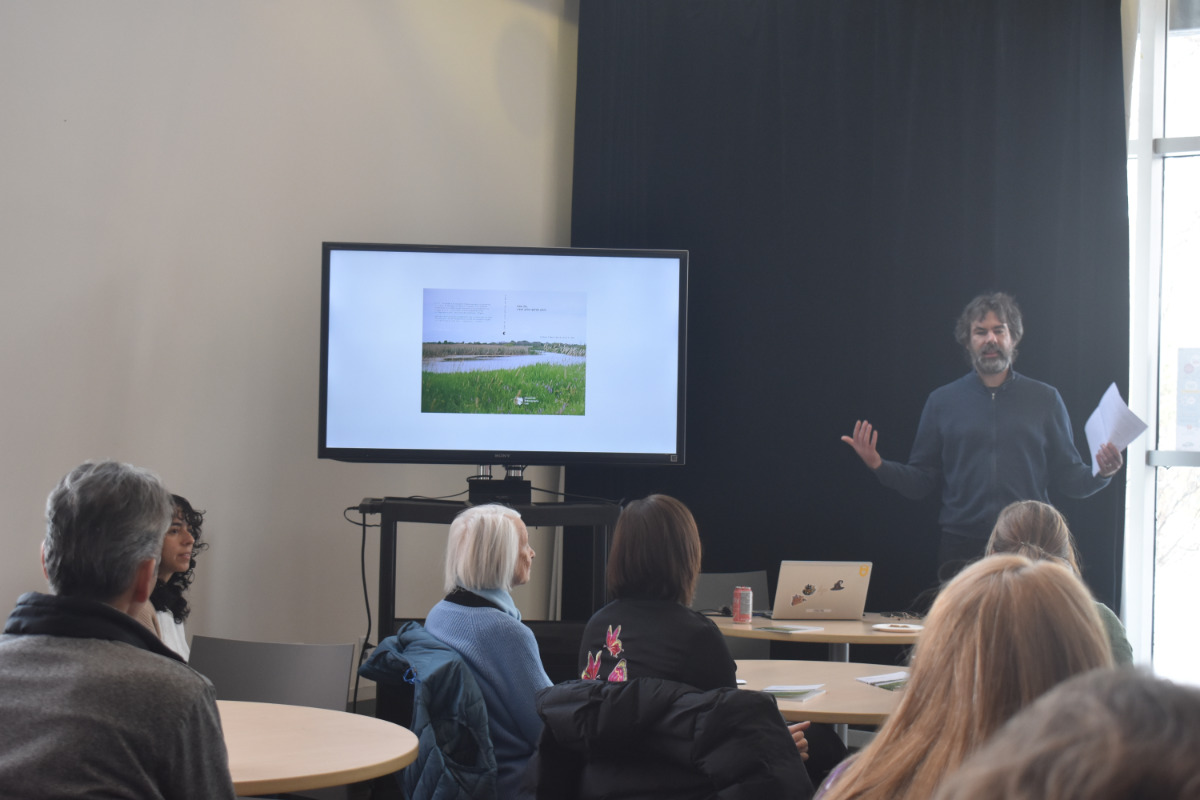
Photo by the Montreal Waterways research collective.
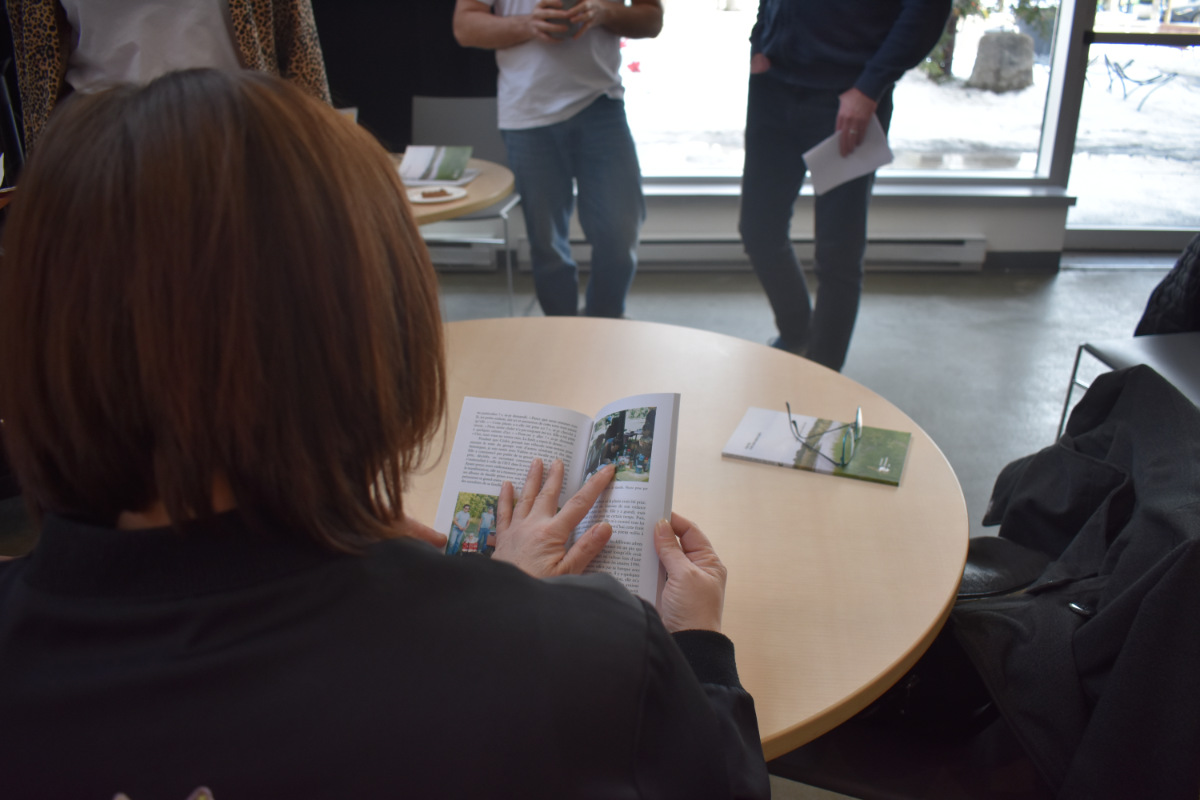
Photo by the Montreal Waterways research collective.
We then opened the floor to residents for comments and questions about the research and the book. Interestingly, the presentation turned into what could almost be described as a town hall, where our roles shifted from presenters to moderators, as we worked to ensure that everyone had a chance to express themselves without interruption. One resident mentioned that Montreal Waterways was the first group of people who actually took the time to listen to them. Another resident stated that what we had given to them was truly a gift. The discussion lasted for almost an hour, and in the end it became clear that some residents were still struggling to come to terms with the expropriation. But, despite the expropriation, for many what really mattered was that they didn’t want to be depicted or remembered as squatters. As much as local municipalities wanted to remove the residents from the island, the book unexpectedly became a way of writing the residents into the island’s archive. And for that, IST residents were grateful.
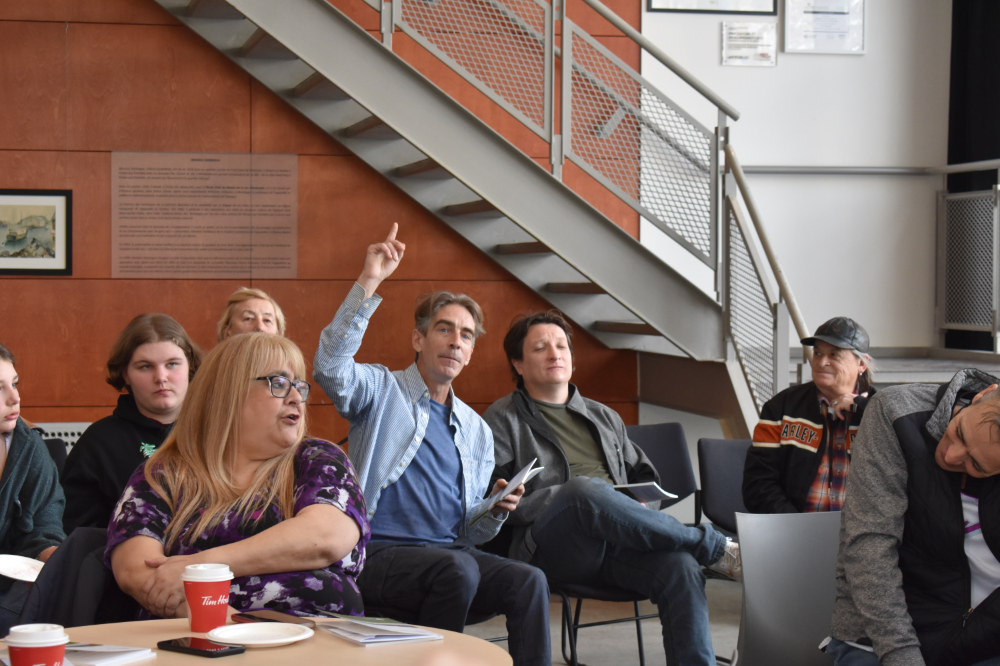
Photo by the Montreal Waterways research collective.
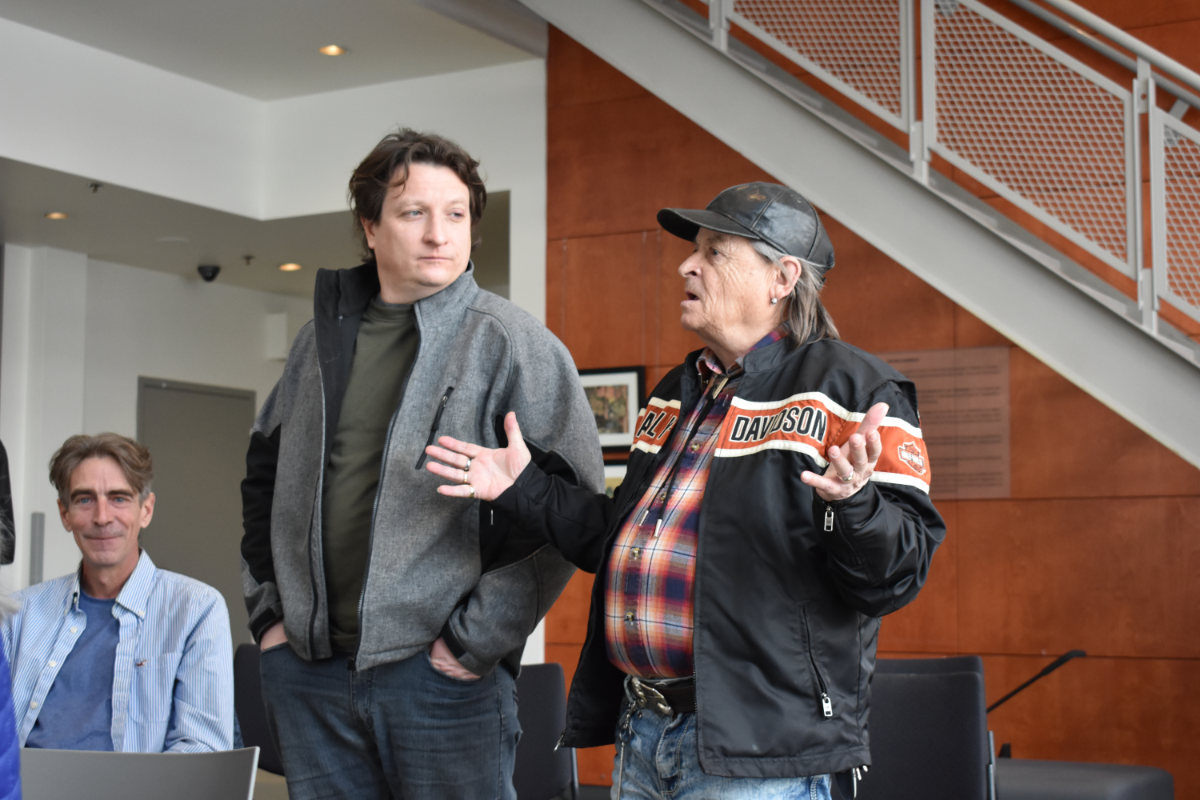
Photo by the Montreal Waterways research collective.
Conclusion
Montreal Waterways learned recently that one of the families from the IST community submitted a copy of the book to the Varennes Public Library, which they have accepted into their archive. Since many from the IST community have their principal residence in the town of Varennes, Montreal Waterways has been asked to present the book once again at a local parish in June of this year. While only a few of the original authors are still active members of Montreal Waterways, those who remain are very interested in following the life of a book that not only collaboratively brought people together in its making, but also continues to do so in its completed form. We are honoured that IST residents have taken the initiative to submit the book to the Varennes Public Library, because ultimately this story is as much theirs as it is ours. Now that residents and the public have had time to read the book for themselves, Montreal Waterways is looking forward to this upcoming presentation and to hear more about how the book is being perceived. The book An Island is More Than a Park in its current form doesn’t claim to give a complete picture of the future eco-park or the expropriation, but rather demonstrates what collaborative ethnographic research can do and continue doing when there are people who remain invested in the process. This story—and the relationship between Montreal Waterways and the IST community—therefore remains ongoing, without certainty as to where it will go next.
The book An Island is More Than a Park is available to all as a free, downloadable PDF here.
This post was curated by Multimedia Contributing Editor Rine Vieth.
Works Cited
Hetherington, Kregg. 2023. “Composite Ethnography,” unpublished manuscript.
